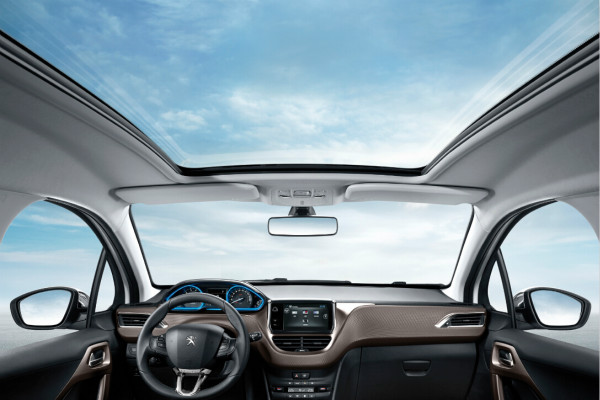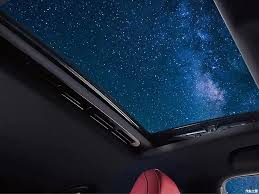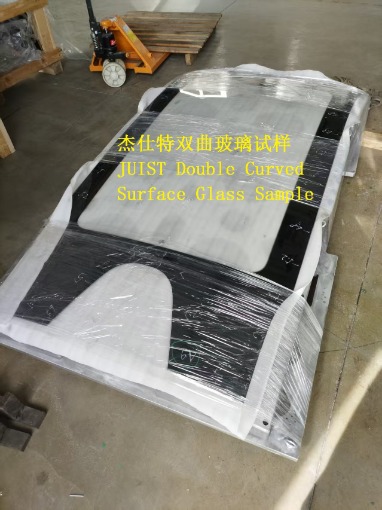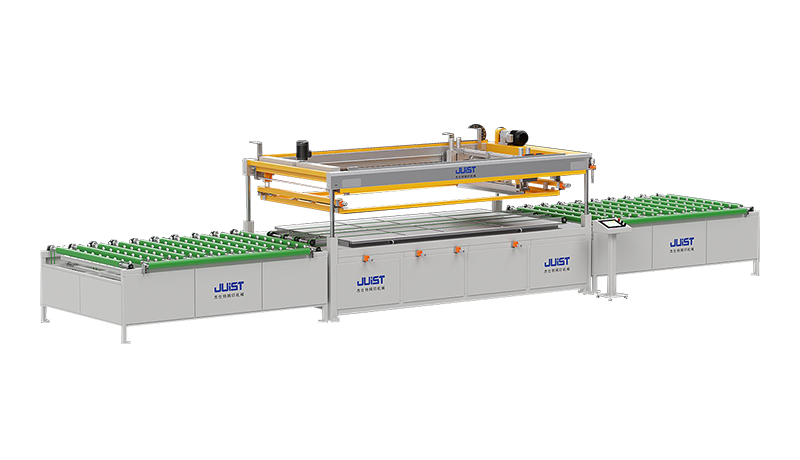+86-519-83387581
l Leading the Next Revolution in Automotive Glass Printing
Of course, the widespread adoption of this technology still faces challenges, such as screen printing precision control, ink adhesion, and automated equipment integration. However, with advancements in equipment and process optimization, these hurdles are gradually being overcome. Changzhou JUIST Screen Printing Machinery is at the forefront of this innovation, continuously developing curved-glass screen printing solutions for industrial applications. Our goal is to provide high-efficiency, high-precision, and fully automated screen printing solutions for automotive glass manufacturers, driving the industry toward new heights.

l Market Prospects and Application Scenarios
This technology is applicable to the following sectors:
1. OEM glass suppliers (e.g., Fuyao, AGC, Saint-Gobain, Asahi Glass, etc.)
2. New energy vehicle (NEV) glass supply chain (Tesla, BYD, etc.)
3. High-end automotive glass customization market (HUD glass, privacy glass, smart glass, etc.)
Key application scenarios include:
1. Automotive Glass: Panoramic sunroofs, smart glass, HUD (Head-Up Display) glass for premium vehicles.
2. Smart Glass: Conductive screen printing technology enabling heating, anti-fogging, and UV protection.
3. Architectural Glass: Applicable for curved architectural glass, subway platform doors, enhancing aesthetics and functionality.


l Post-Bending vs. Traditional Screen Printing: A Comparative Analysis
|
Comparison Factor |
Traditional Process (Pre-Printing, Post-Bending) |
New Process (Post-Bending, Pre-Printing) |
|
Printing Precision |
Prone to deformation and diffusion |
No deformation, high precision |
|
Yield Rate |
Higher defect rate |
Improved yield rate |
|
Adaptability |
Affected by bending process |
Compatible with various glass types |
|
Equipment Investment |
Traditional flat-screen printing |
Requires curved-screen printing development |
Advantages of the Post-Bending Screen Printing Process
1. Prevention of Image Distortion and Damage
- In traditional processes, glass softens during heating, causing ink to spread, deform, or crack.
- The post-bending screen printing method eliminates these issues, ensuring precise image placement.
2. Superior Screen Printing Precision
- Since printing occurs after the glass has been fully formed, the position and details remain highly accurate—particularly essential for panoramic sunroofs, HUD glass, and other high-precision applications.
3. Improved Production Yield
- The traditional process risks glass deformation or breakage during bending, leading to high rejection rates for pre-printed glass.
- With post-bending screen printing, only qualified glass is printed, reducing material waste.
4. Greater Design Flexibility
- Enables complex screen printing patterns, such as gradients, fine lines, conductive silver paste, and UV protection coatings, catering to high-end market demands.
5. Wider Ink Selection
- Supports low-temperature curing and UV-curable inks, overcoming the limitations of high-temperature sintering and expanding application possibilities.

l Challenges and Optimization Strategies
Despite its advantages, post-bending screen printing still presents technical challenges:
1. Adaptability to Curved Glass Surfaces
- Post-bending glass may have irregular curvatures, making uniform screen printing difficult.
- Development of curved screen printing platforms with flexible screen meshes and squeegees is required.
2. Ink Adhesion Issues
- Low-temperature or UV-curable inks must undergo rigorous testing to ensure durability, scratch resistance, and chemical stability.
3. Optimization of Post-Printing Curing Processes
- Since high-temperature sintering is not feasible, alternative UV curing, infrared drying, or hot air drying methods are needed.
4. High Equipment Development and Investment Costs
- The industry needs intelligent curved-screen printing machines with automatic alignment systems to enhance printing precision and efficiency.
l Equipment Development Directions
1. Curved-Screen Printing Machine Design
- Adaptation to Glass Curvature: Development of curved-screen printing platforms with adjustable screen frames and curvature-adaptive squeegees.
- Automatic Positioning System: Machine vision + robotic precision alignment ensures high printing accuracy.
- Vacuum Suction Platform: Stabilizes glass and accommodates various curved glass shapes.
2. Low-Temperature Curing Process Development
- UV-Curable Inks: Avoids high-temperature sintering issues while ensuring strong ink adhesion.
- Infrared/Hot Air Drying: Enables rapid ink curing and enhances durability.
3. Highly Efficient Automated Production Lines
- Intelligent Conveyor System: Automates glass transfer, increasing production efficiency.
- Inline Quality Inspection: Incorporates AOI (Automated Optical Inspection) systems to boost yield rates.
4. Customized Screens and Squeegees Optimization
- Optimized Curved Screens: Advanced tension control ensures consistent, uniform printing.
- Flexible Squeegee System: Adapts to glass curvature, preventing uneven prints or ink buildup.

JUIST 3D curved glass screen printing machine
Changzhou JUIST Screen Printing Machinery is leading the advancement of curved-glass screen printing technology. Through close collaboration with automotive glass manufacturers, we are developing high-precision, automated solutions tailored for complex curved surfaces. As the industry shifts toward higher design complexity and performance standards, we are committed to pushing the boundaries of what's possible in screen printing for automotive and smart glass applications. At JUIST, we are proud to lead the next revolution in automotive glass printing. By combining technical innovation with deep industry collaboration, we are shaping the future of curved-glass screen printing. Join us as we help redefine precision, efficiency, and creativity in automotive design.










